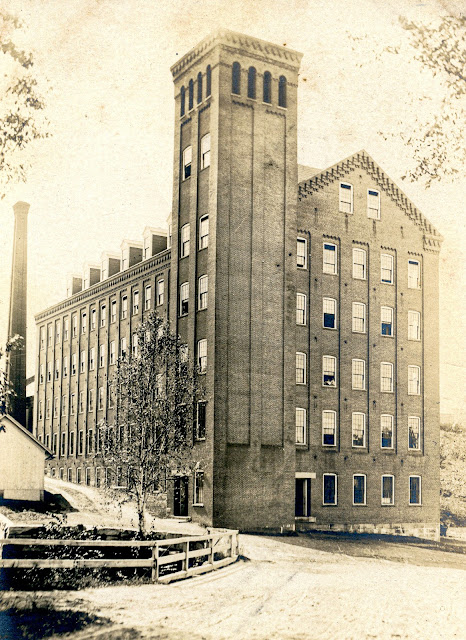A Brief History of New Ipswich - Part 1
Some Background
A Brief History - Page 1
Very soon after the first colonists of New England arrived, settlers penetrated far up the beautiful valleys of the Connecticut and the Merrimac. However, a large tract of country, much nearer the seaboard, which included the present town of New Ipswich, remained unoccupied. This may have been due to the mountains and hills which surround the valley. History tells us that in the summer of 1738, Abijah Foster, then thirty years of age, his wife, and one year old daughter, arrived here from Ipswich, Massachusetts, and became our pioneer settler. Mr. Foster, and his son, Ebenezer, the first male child born in this settlement, entered the army and both of them died in the service (of small-pox) near Crown Point in 1759. Thus, this town had a native-born citizen serving his country as early as the French & Indian War.
The Masonian Charter, executed on the 17th of April 1750, appears to serve as our official birth certificate. Statistics show that the population of New Ipswich in 1750 was about 120 as compared to 1,878 in 1850. The year 1850 appears to be the peak year as census figures thereafter show a decline until 1900 when it reached a low of 911. Again, the population took an upswing until the present time with a census figure of 1,803 for the year 1970.
In 1762, it was voted that a school be kept in town three months each year and Of course, children had been taught at home prior to this, but this was the no more. first move towards a community sponsored school. Eventually, with the growth of the town, there were eight school districts with a school in each district. In time these schools were consolidated into one school, built and occupied in 1939, located in the center of town, and housing grade one through six.
On June 18, 1789, by act of the New Hampshire State Legislature, the New Ipswich Academy was incorporated. Honorable Samuel Appleton wrote that, "The zeal they had for education was so great that some of them even mortgaged their houses and lands to raise money to educate their children". New Ipswich Academy was the second academy in the state, Phillips Exeter being five years its senior, although the town of Exeter is a century older. The Academy is the third in the entire United States to be co-educational. In consequence of numerous and important donations from Samuel Appleton and his family, the New Ipswich Academy was renamed the New Ipswich Appleton Academy in June 1853. Originally a boarding school for tuition students, it ultimately took care of the schooling of our children, grades seven through twelve, on a tuition basis. On January 23, 1941, the Academy main building was destroyed by fire but was built again the following year and continued to serve the community until the advent of the Mascenic Regional School in 1968. Thereafter, Appleton Academy became a private male boarding school.
The necessities of frontier life made it essential that the abundant waterpower of the region be utilized. In 1741, the first sawmill was built and in October 1751, the first corn mill. Space does not permit me to enumerate or describe all the mills and plants which sprung up for manufacturing purposes. A cotton factory put in operation on the 15th of December 1804 has the distinction of being the first cotton factory in the State of New Hampshire. The Waterloom Mill, built in the Bank Village section of town, erected in 1821, was the first one in New Hampshire using power looms. The first mill in the High Bridge area went into operation in 1825 and has operated ever since.
Notes:



The Masonian charter references the Mason title from the 1600's in which England granted Capt John Mason land; much of southern NH and southward into Massachusetts is part of the Masonian land grant.
ReplyDeleteThank you, answered a question that Google didn't know.
Deletehttps://www.americanantiquarian.org/proceedings/44806616.pdf
ReplyDelete